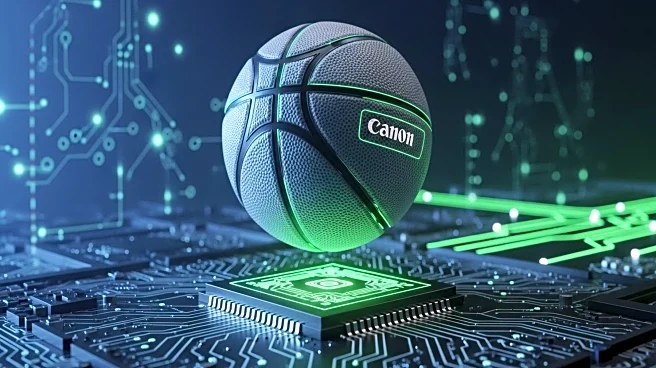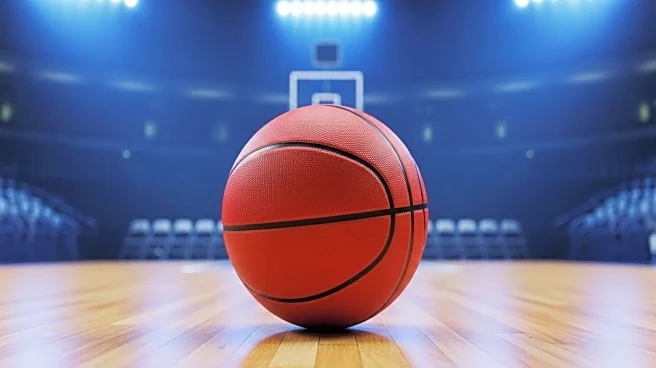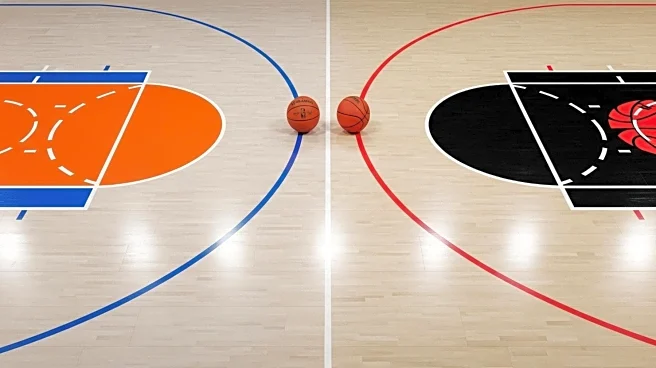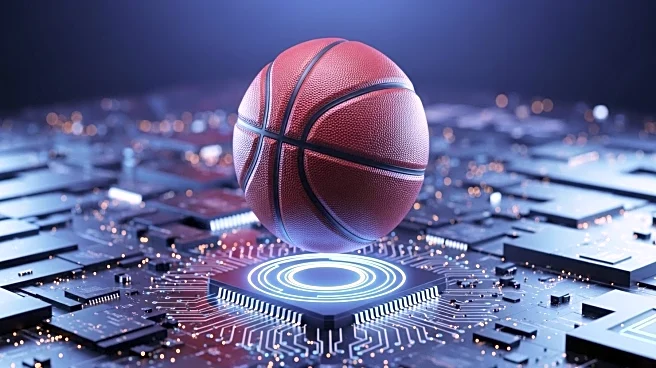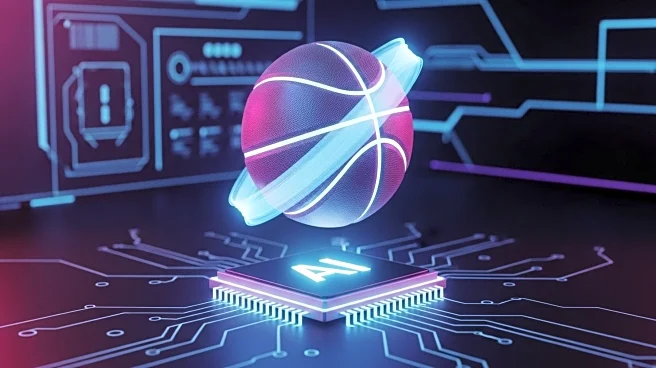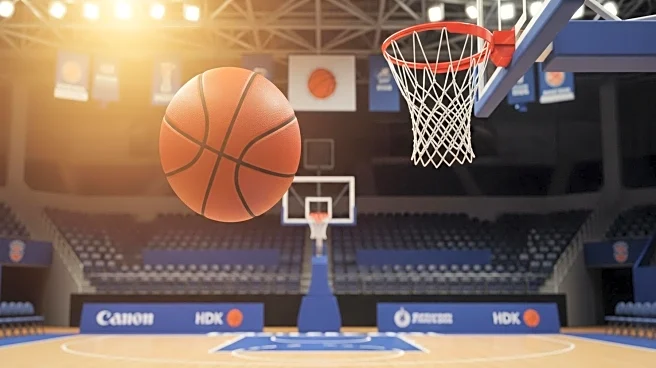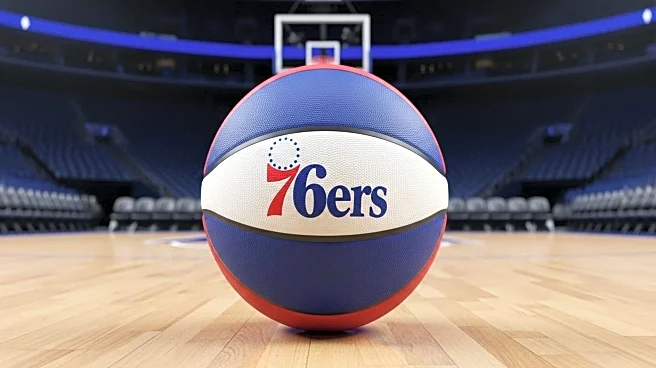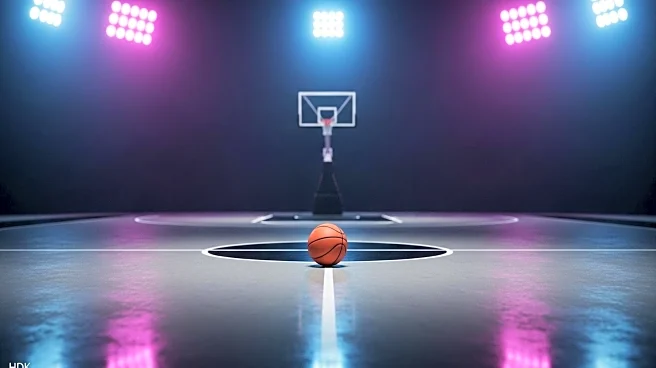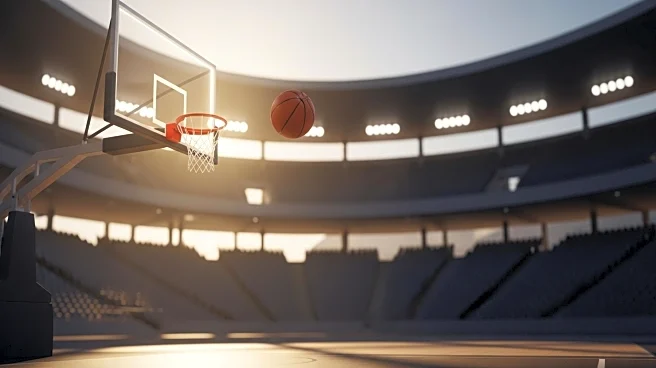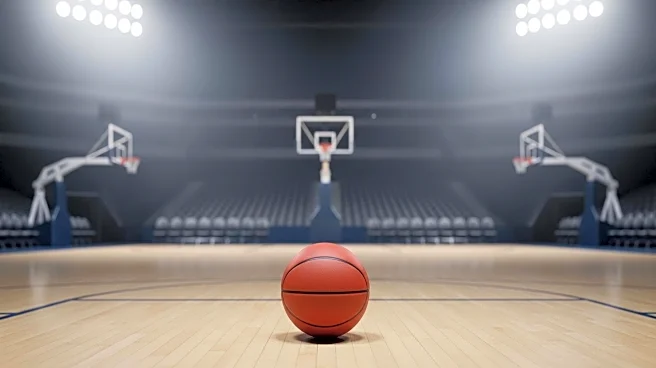What is the story about?
What's Happening?
The NBA is increasingly utilizing technology to improve the accuracy of officiating during games. The league has introduced an 'automated officiating' tool that employs cameras and sensors to track various elements on the basketball court, such as the ball, players' limbs, and other body parts. This system incorporates machine learning and artificial intelligence to analyze movements and make precise calls. The technology aims to enhance the accuracy of objective calls, allowing human referees to focus on more complex judgment plays. This initiative is part of a broader trend in sports, where technology is being used to assist officiating, as seen in Major League Baseball and tennis. The NBA's approach includes using earpieces for referees and sensors in basketballs to collect data, all aimed at improving game flow and transparency.
Why It's Important?
The implementation of automated officiating tools in the NBA is significant as it represents a shift towards integrating advanced technology in sports to ensure fair play and accuracy. This move could potentially reduce human error in officiating, leading to more reliable outcomes in games. For the NBA, this means maintaining the integrity of the sport and enhancing the viewing experience for fans by providing clear explanations of calls through computer-generated images. The technology also supports referees by allowing them to concentrate on judgment calls, which could improve overall officiating quality. As sports leagues increasingly adopt such technologies, it could set a precedent for other industries to leverage AI and machine learning for precision and efficiency.
What's Next?
The NBA plans to continue refining its automated officiating system, potentially expanding its use in regular season games. The league is exploring additional communication methods, such as sending alerts to smartwatches, to further streamline decision-making processes. As the technology evolves, it may lead to more sophisticated data collection and analysis, providing deeper insights into game dynamics. Stakeholders, including teams, players, and fans, are likely to monitor the impact of these changes closely, assessing how they affect game outcomes and the overall experience. The success of this initiative could influence other sports leagues to adopt similar technologies, further integrating AI into the sports industry.
Beyond the Headlines
The introduction of automated officiating tools raises questions about the balance between human judgment and technological precision in sports. While technology can enhance accuracy, it also prompts discussions about the role of human referees and the potential for over-reliance on machines. Ethical considerations regarding data privacy and the use of AI in decision-making processes are also relevant, as these systems collect and analyze vast amounts of data. The long-term implications could include shifts in how sports are officiated and perceived, potentially altering traditional aspects of the game.
AI Generated Content
Do you find this article useful?
